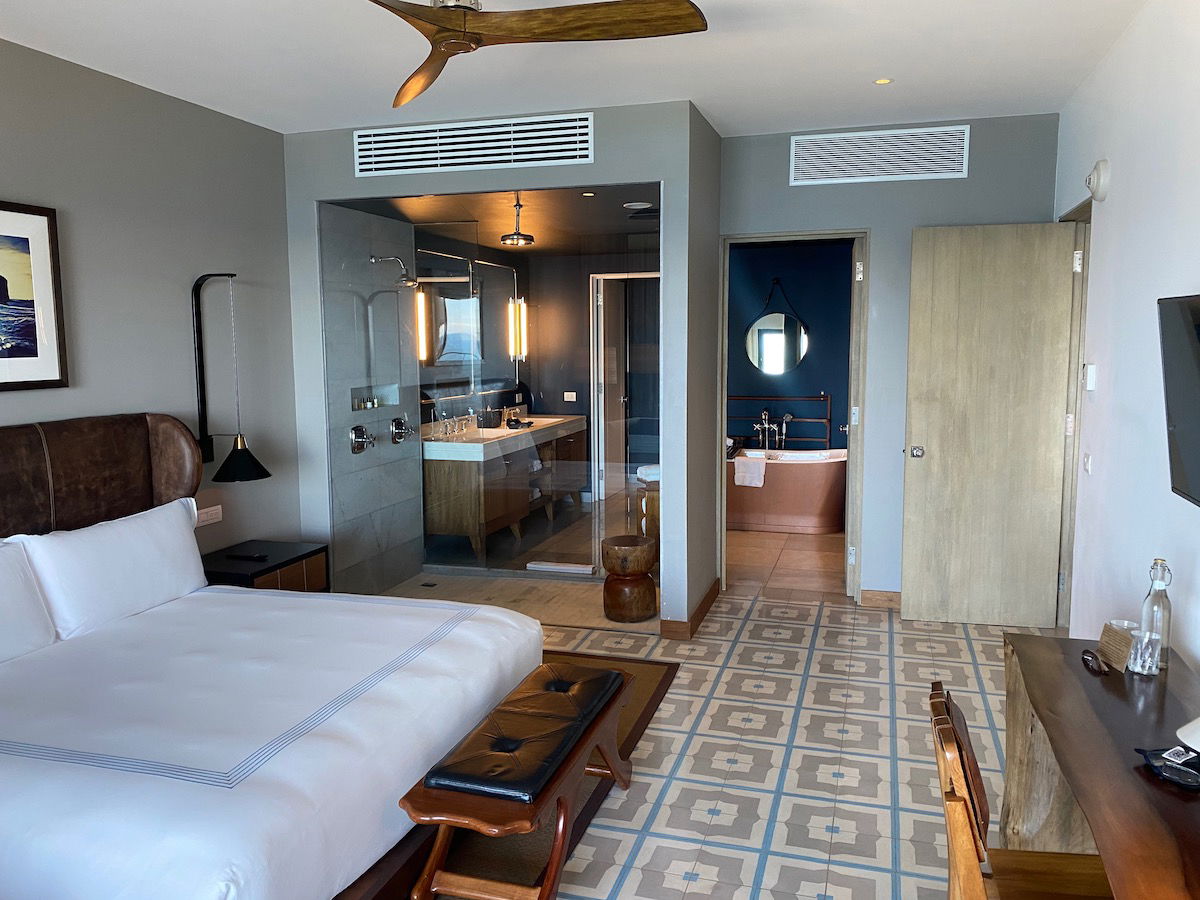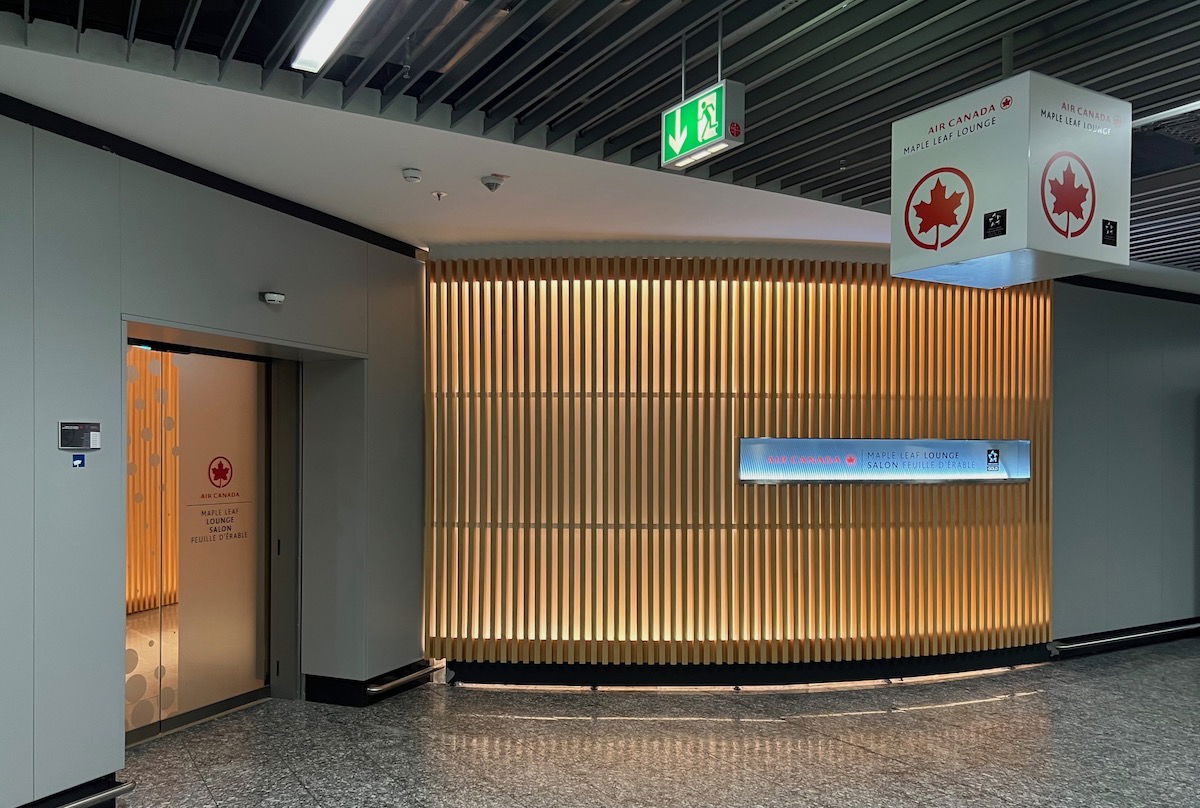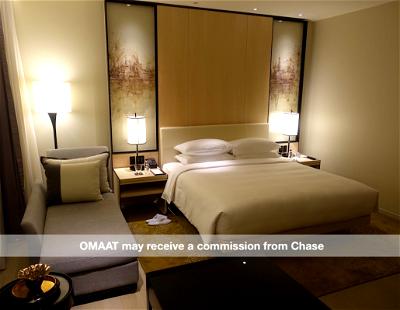Link: Apply now for the Chase Sapphire Preferred® Card or Chase Sapphire Reserve® Card
The Chase Sapphire Preferred® Card and Chase Sapphire Reserve® Card are both compelling travel rewards credit cards. In this post, I’d like to compare the two cards — while they have a lot of similarities, they also have a lot of differences, especially with the recent Sapphire Reserve refresh.
Let’s start by talking about what the two cards have in common, then we’ll talk about the differences, and then we’ll talk about how to decide which card is a better fit for you.
In this post:
What both Chase Sapphire cards have in common
The Chase Sapphire Preferred and Chase Sapphire Reserve have quite a bit in common. Among other things:
- Both cards act as excellent “hub” cards for earning Chase Ultimate Rewards points, and allow you to transfer points at the same rates to the Ultimate Rewards airline and hotel partners
- Both cards have no foreign transaction fees, so are great for purchases abroad
- Both cards offer valuable travel coverage, including for delayed flights, lost bags, and rental cars
- Both cards offer 3x points on dining purchases globally, making them among the best cards for dining spending
- Both cards offer a complimentary DoorDash DashPass for a minimum of one year when activated by December 31, 2027, which ordinarily costs $9.99 per month
- Both cards offer 5x points on eligible Lyft purchases through September 30, 2027

Advantages of the Chase Sapphire Preferred
There’s a lot to love about the Chase Sapphire Preferred. The card has a $95 annual fee, and offers:
- 5x points on Chase Travel bookings, 3x points on dining, streaming services, and online grocery store purchases (excluding Target, Walmart, and wholesale clubs), and 2x points on travel
- 10% anniversary bonus points, calculated by your “base” earning per dollar spent
- A $50 hotel credit every cardmember year, usable through Chase Travel
- The ability to add authorized users at no extra cost, so their spending counts toward your points accrual
- The card has a welcome offer of 75,000 bonus points after spending $5,000 within three months
So, what makes the Sapphire Preferred better than the Sapphire Reserve? The significantly lower annual fee, the ability to add authorized users at no extra cost, the 10% anniversary bonus points, the 3x points on streaming services and online grocery store purchases, the 2x points on all travel purchases (as opposed to just a bonus on airfare and hotel bookings), and the $50 annual hotel credit.
Read a full review of the Chase Sapphire Preferred.

Advantages of the Chase Sapphire Reserve
There’s a lot to love about the Chase Sapphire Reserve. The card has a $795 annual fee, and offers:
- 8x points on Chase Travel bookings, 4x points on direct airfare and hotel bookings, and 3x points on dining
- A bunch of credits and benefits that can help offset the annual fee, including an up to $300 annual travel credit, an up to $300 annual dining credit, an up to $500 annual hotel credit, an up to $300 annual live entertainment credit, and a complimentary subscription to Apple TV+ and Apple Music, through June 22, 2027
- A $300 annual travel credit, which can be applied toward virtually any purchase
- A Priority Pass membership, offering access to 1,300+ airport lounges around the world, including unlimited access to Chase Sapphire Lounges, as well as access to select Air Canada Lounges when on an eligible ticket
- The ability to redeem points at an elevated rate with the Points Boost feature, including for select airfare and hotel bookings
- Perks with DoorDash, including a DashPass, plus a $5 monthly DoorDash credit; the credit expires after three months, so you could potentially use $15 worth of credits every three months
- Perks with Lyft, including a $10 monthly in-app credit (excludes Wait & Save, bike, and scooter rides)
- The card has a welcome offer of 100,000 bonus points and a $500 Chase Travel credit after spending $5,000 within three months
What makes the Sapphire Reserve better than the Sapphire Preferred? I’d consider the $300 travel credit to basically be good as cash, meaning the card should really only be “costing” you around $495 per year. That’s before considering all the other credits and perks.
For that, the major advantages are the valuable airport lounge access, 4x points on direct airfare and hotel bookings (rather than 2x points on all travel purchases with the Sapphire Preferred), and the ability to potentially redeem points at a higher rate with Points Boost.
Read a full review of the Chase Sapphire Reserve.

Which Chase Sapphire personal card is better?
As you can see above, there are pros and cons to both the Chase Sapphire Preferred and Chase Sapphire Reserve. On an ongoing basis, how should you decide which of these two cards makes the most sense for you?
In terms of the long term value, I think for most people, the Sapphire Preferred will be the default option, since it has generous benefits and a lower annual fee. After all, people don’t want to pay more in annual fees than they have to. However, there are a few general circumstances under which I think the Sapphire Reserve is better than the Sapphire Preferred in the long run.
Let me note that for mental accounting purposes, I consider the real “cost” difference between the two cards to be around $400 per year. The Sapphire Preferred has a $95 annual fee, while the Sapphire Reserve has a $795 annual fee, but I subtract $300 from that, due to the value of the travel credit, which everyone should be able to maximize.
With that in mind, let me share the areas where you can get significantly more value with the Sapphire Reserve than the Sapphire Preferred (this doesn’t consider the welcome offer, which should also be factored in).
Do you value a Priority Pass membership?
One of the major benefits of the Chase Sapphire Reserve is that it offers a Priority Pass membership. This offers unlimited lounge visits, and you can take two guests into lounges with you at no extra cost.
Nowadays several premium credit cards come with a Priority Pass membership — for those without a membership, this could easily be worth a significant amount, while for those with a membership, it might not be worth anything.

Do you value Chase Sapphire Lounge access?
In addition to a Priority Pass membership, it’s worth calling out that the Chase Sapphire Reserve specifically offers unlimited access to Chase Sapphire Lounges. This lounge network is growing at a fast pace, and some of the lounges are really stellar, like the locations in Boston (BOS) and New York (LGA).
These lounges are amazing, and feature a la carte dining, a great buffet and drink selection, beautiful decor, and some unique amenities. While all Priority Pass members can access these lounges at least once per year, those with a Priority Pass membership through the Chase Sapphire Reserve get unlimited annual visits, and can also bring guests, so that’s a major advantage of the card.

Do you value Air Canada Lounge access?
The Chase Sapphire Reserve offers access to select Air Canada Lounges at participating locations. To enter, you simply need to present your eligible credit card, plus a same-day boarding pass for a flight operated by Air Canada or a Star Alliance member airline.

Do you plan to add authorized users?
The decision of whether or not you plan to add authorized users to the card could sway the decision one way or another. The Chase Sapphire Preferred charges no fee for authorized users, while the Chase Sapphire Reserve charges $195 per authorized user.
If you strictly want to add authorized users in order to be rewarded for their spending, then being able to add authorized users at no cost on the Sapphire Preferred is probably a major advantage. However, others may value being able to add authorized users on the Sapphire Reserve at the cost of $195 per person.
That’s because authorized users receive great perks, including all the lounge access benefits, from the Priority Pass membership, to Chase Sapphire Lounge access, to Air Canada Lounge access. Everyone has to decide for themselves.

What does your travel spending profile look like?
Both cards offer bonus points on travel purchases, though the exact types of purchases that are rewarded differ:
- The Chase Sapphire Preferred earns 5x points on Chase Travel bookings, and 2x points on all other travel purchases, before the 10% anniversary bonus points (calculated from base earnings)
- The Chase Sapphire Reserve earns 8x points on Chase Travel bookings, and 4x points on direct airfare and hotel bookings
I value Ultimate Rewards points at 1.7 cents each, so to me, we’re talking about a return of anywhere from 3.4% to 13.6%, depending on the type of purchase.
Obviously if you’d book a lot of travel with Chase Travel or directly with airlines and hotels, there’s a huge advantage to the Sapphire Reserve. Meanwhile if you spend a lot on non-airfare and hotel bookings, then the Sapphire Preferred has the obvious advantage.

How much value can you get from credits?
Nowadays the Chase Sapphire Reserve has a way higher annual fee than the Chase Sapphire Preferred, so in order to decide whether the fee is worth it, you have to figure out how much value you can get from the premium card’s credits and benefits.
As is the case with many premium cards, you have a high annual fee, but then a bunch of perks that take effort to use, but can ultimately offset the annual fee. There’s a $700 difference in the annual fee between the two cards. Then you have the $300 travel credit, which I consider to be good as cash, meaning the real cost difference between the products is $400.
So you should decide how much value you can get from all of the card’s credits, since there’s often a bit of a barrier to maximizing them. I covered these above, but we’re talking about everything from a $300 dining credit, to a $500 hotel credit, to a subscription to Apple TV+ and Apple Music.
In my own situation, I can easily maximize the $300 dining credit, since some restaurants that I frequent are on the list. Furthermore, I value an Apple TV+ and Apple Music subscription, since I currently pay for (part of) that.
For me, that essentially justifies the difference in fee between the two cards, and makes the more premium card worth it. However, everyone has to crunch the numbers for themselves.

Do you plan on using the Points Boost feature?
If you want to transfer your Ultimate Rewards points to airline and hotel partners, like World of Hyatt, then there’s no difference in redemption values between the points earned on these two cards.
With Chase’s new Points Boost feature, you can get 1.25-2.0 cents per point toward select airfare and hotel redemptions. Now, personally I consider these redemption values to be quite limiting, so it’s not how I’d choose to redeem my points, at least not broadly.
That being said, when these are available, the Chase Sapphire Reserve generally offers a higher redemption value than the Chase Sapphire Preferred, so everyone has to decide for themselves on the value of that.

Bottom line
Both the Chase Sapphire Preferred and Chase Sapphire Reserve are incredibly compelling cards. While the Sapphire Reserve perhaps gets a bit more attention nowadays, the Sapphire Preferred is incredibly compelling as well.
The major advantages of the Sapphire Reserve are the lounge access, the potentially better rewards structure, and the credits helping to offset the annual fee. The major advantage of the Sapphire Preferred is that it has a much lower annual fee, you can add authorized users at no extra cost, and the 2x points on all travel purchases is superior for some.
If you have a Chase Sapphire card, do you think the Preferred or Reserve is more valuable nowadays?





P1 and P2 have the CSP. Does it make sense to get the CSR for one year and keep the CSP, then close the CSR after the year ?
How about comparing the various medical, accident, evacuation, etc. options, since I don't think the Preferred has much of that compared to the Reserve....
"So, what makes the Sapphire Preferred better than the Sapphire Reserve?" - I think there is a better answer than listing the benefits of the Preferred card a second time. Value for annual fee and the ability to recover the annual fee through the benefits, I think is the simple answer.
Your post from face value makes it look like the Reserve is full of these credits such as the travel, dining, etc, but it...
"So, what makes the Sapphire Preferred better than the Sapphire Reserve?" - I think there is a better answer than listing the benefits of the Preferred card a second time. Value for annual fee and the ability to recover the annual fee through the benefits, I think is the simple answer.
Your post from face value makes it look like the Reserve is full of these credits such as the travel, dining, etc, but it is not really the case given the limitations to use almost all of them. The major blow is also the value of the points of redemption which changed too.
The airport lounge access is offered on other cards. The increased points does not justify $495 considering how limited that is too. I guess the specific lounges mentioned such as Air Canada could be useful depending on your spending habits.
I am wanting to consolidate my chase cards. I currently have a Chase INK Business Preferred, I just downgraded my personal Chase Preferred to a Chase Freedom flex, but I am confused now as to which cards to keep, knowing the deadline to use points by Oct 27 with the old redeption. Did I shoot myself in the foot by downgrading with the point usage changing -- Is there any recourse? can I ask chase to change me back? My wife still has a personal Chase Preferred.
I have the CSR and +1 has the CSP. I plan on shifting $50k+ of tour/cruise spending to the +1’s CSP after October. Not sure how long that 2% will last before Chase kills that, too.
I'm in the position of deciding how to replace my Chase Reserve card when the new annual fee hits. I plan to downgrade to the Preferred card (to keep my UR points and get 2% on other travel) and then get the VentureX card (seems like a no-brainer) but the "wonderful" folks at Capital 1 have decided i don't qualify at this time because:
Based on your credit report from one or more of...
I'm in the position of deciding how to replace my Chase Reserve card when the new annual fee hits. I plan to downgrade to the Preferred card (to keep my UR points and get 2% on other travel) and then get the VentureX card (seems like a no-brainer) but the "wonderful" folks at Capital 1 have decided i don't qualify at this time because:
Based on your credit report from one or more of the agencies on the back of this letter, there are too many active credit cards based on your loan history.
I don't have that many cards and I'm pretty sure that most folks on this blog who have the VentureX card also have a plethora of cards -- Ben recently posted that he has 24 cards. Have others experienced this rejection. What gives and more importantly any ideas how to circumvent this road block.
Thanks
@ GBOAC -- The inconsistency with Capital One approvals can be frustrating, no doubt. Only thing I can recommend is to wait a bit longer and then try again. Alternatively, if you qualify for a business card, the approval standards there are often a bit different, so you might have luck there.
@Ben - how would your comparison change for someone who also has a Capital One Venture X and/or an AMEX Platinum?
@ Ted -- It would definitely change the math in favor of the Sapphire Preferred, especially if you don't value Chase Sapphire Lounge or Air Canada Lounge access. The Sapphire Reserve could still be worth it, though, if you get value from the bonus categories, and/or if the credits can get you more value than the annual fee.
Just downgraded my CSP to FF... will probably open CSR in six months or so simply for the SUB... close the account in a year... then I might finally be done with Chase. Despite all the media attention lately, Chase's lead has slipped considerably in the past 15 years and that cannot be denied.
Ben, I know you recently critiqued the WF Autograph for not having transfer bonuses, but here's the thing.... ignoring "old"-BILT's generous...
Just downgraded my CSP to FF... will probably open CSR in six months or so simply for the SUB... close the account in a year... then I might finally be done with Chase. Despite all the media attention lately, Chase's lead has slipped considerably in the past 15 years and that cannot be denied.
Ben, I know you recently critiqued the WF Autograph for not having transfer bonuses, but here's the thing.... ignoring "old"-BILT's generous 150% bonuses, most transfer bonuses are in the ballpark of 130%. So using that figure in mind, let's just calculate simple adjusted returns here.
5x on hotels vs 3x with competitors would be adjusted to 5x vs 3.9x
4x on direct airfare vs 3x with competitors would be adjusted to 4x vs 3.9x.
Therefore, I think you still come out ahead with WF. Not to mention I'd always rather have "more points in the bank" that I can use how I want, rather than *hoping* we see a transfer bonus in the months leading up to a planned points redemption.
@ Redacted -- I think your approach is totally fair, and I promise I'll incorporate the Wells Fargo Autograph Journey into more coverage about bonus categories, so that people can decide for themselves.
My issue with the card isn't just the lack of transfer bonuses, but also the limited number of transfer partners.
The preferred’s travel and extended warranty insurance offerings also blow the WF card out of the water. Still feels like WF is missing a few components to compete with Amex, Chase, CapOne and Citi.
This new Chase Reserve has made me reevaluate all my cards. To my surprise the Wells card offers cell phone protection, which was a nice surprise. The insurances aren't bad, but not as good as Chase. And the coverages on the Venture card were pretty meh, although they extend warranty up to two years if the original warranty is at least two years. That's pretty good. Wells for phones, Venture for appliances, Chase for primary...
This new Chase Reserve has made me reevaluate all my cards. To my surprise the Wells card offers cell phone protection, which was a nice surprise. The insurances aren't bad, but not as good as Chase. And the coverages on the Venture card were pretty meh, although they extend warranty up to two years if the original warranty is at least two years. That's pretty good. Wells for phones, Venture for appliances, Chase for primary care rental and trips. It's definitely hard to keep straight which to use for what.